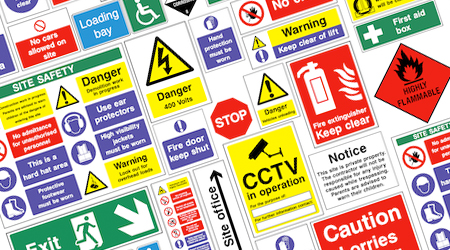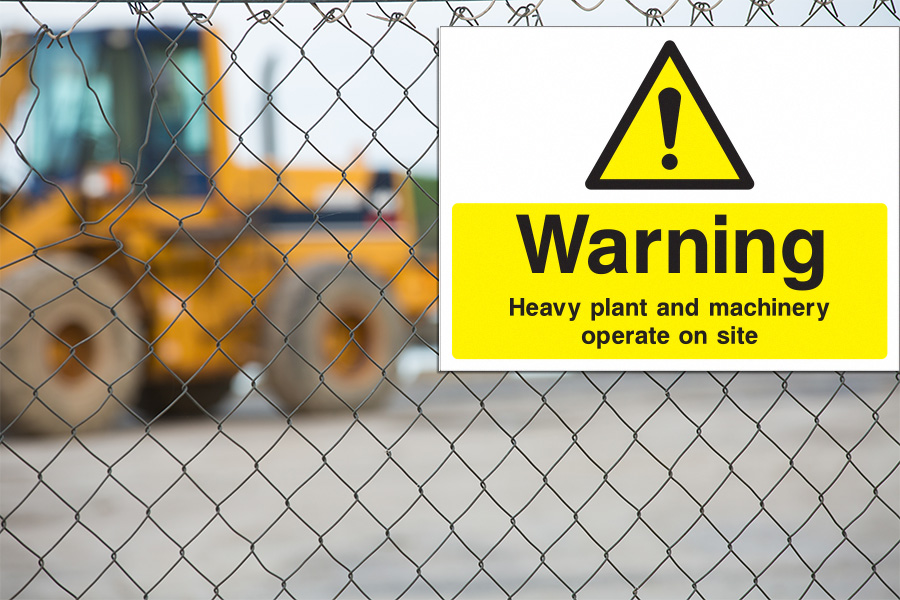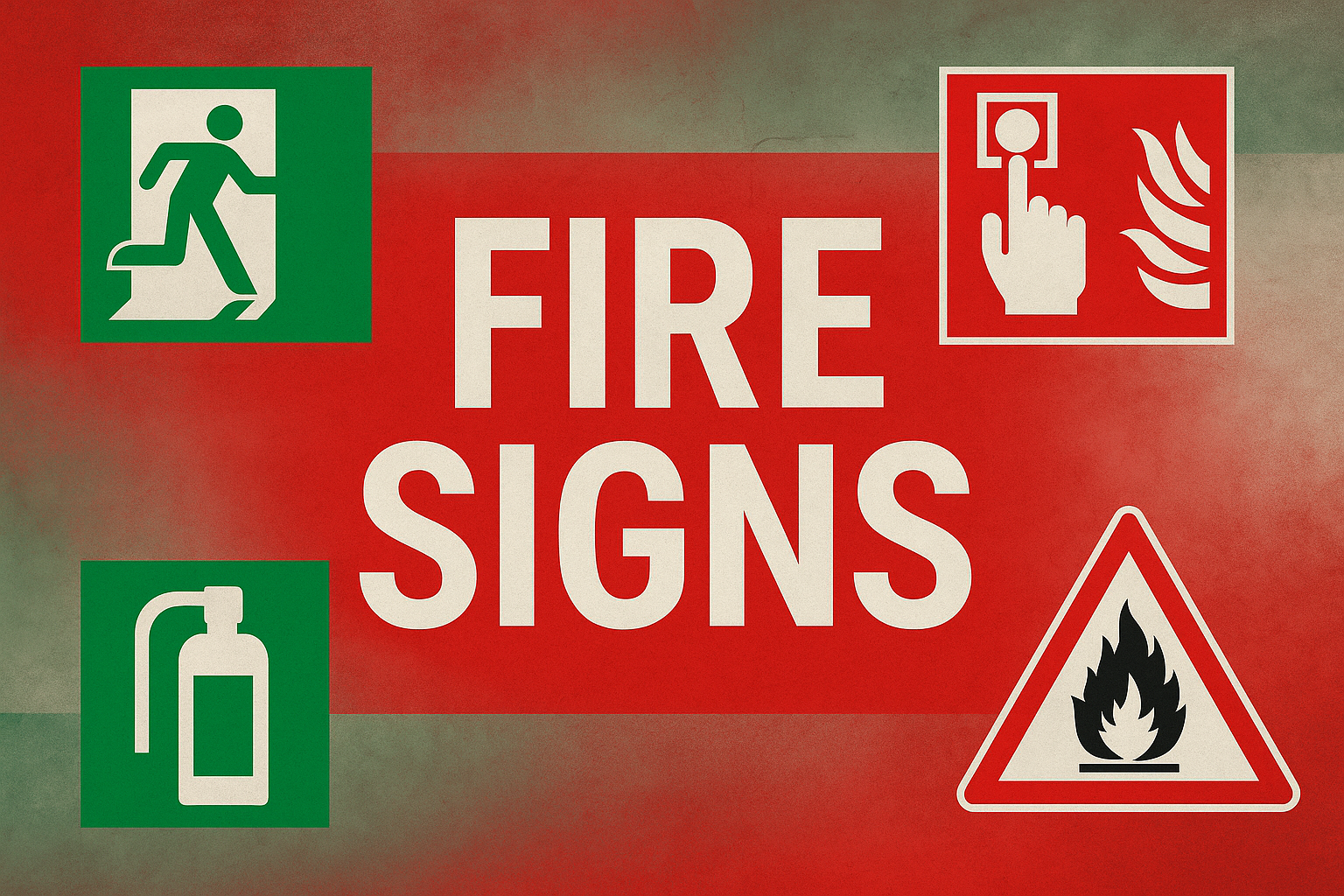The Ultimate Guide to COSHH Symbols and What They Really Mean
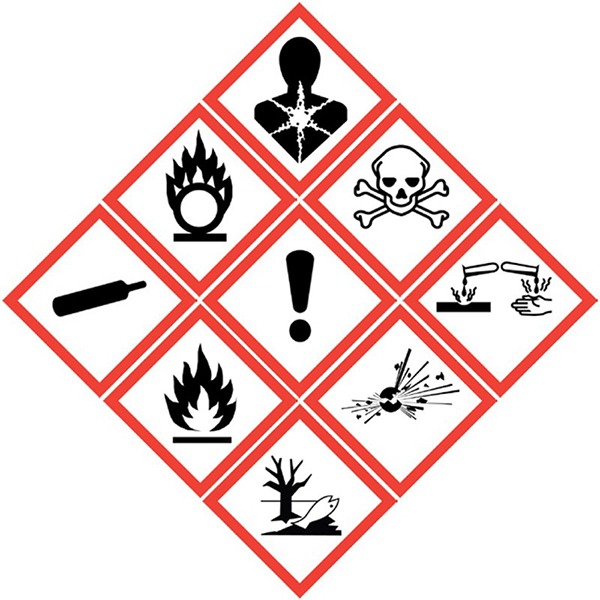 When it comes to workplace safety, few things are as vital as understanding hazard communication. One of the most important aspects of this is the Control of Substances Hazardous to Health Regulations, more commonly known as COSHH. These regulations protect workers, visitors and the public from substances that could cause harm. COSHH places distinctive symbols at the centre of safety signs and product labels. People across industries recognise these symbols instantly, and they provide clear information about the type of hazard a substance presents.
When it comes to workplace safety, few things are as vital as understanding hazard communication. One of the most important aspects of this is the Control of Substances Hazardous to Health Regulations, more commonly known as COSHH. These regulations protect workers, visitors and the public from substances that could cause harm. COSHH places distinctive symbols at the centre of safety signs and product labels. People across industries recognise these symbols instantly, and they provide clear information about the type of hazard a substance presents.
Each COSHH symbol carries a clear meaning that helps workers and employers understand the risks associated with hazardous substances. They highlight how to handle, store and dispose of materials safely while supporting compliance with workplace safety laws. COSHH symbols also play a vital role in protecting employees’ health and ensuring that businesses maintain safe and efficient operations.
The COSHH Symbols
The COSHH symbols are part of the Globally Harmonised System of Classification and Labelling of Chemicals (GHS). They are used across Europe and the UK to ensure consistency in how chemical hazards are communicated. Each symbol is placed inside a red diamond border with a white background, ensuring that they stand out clearly.
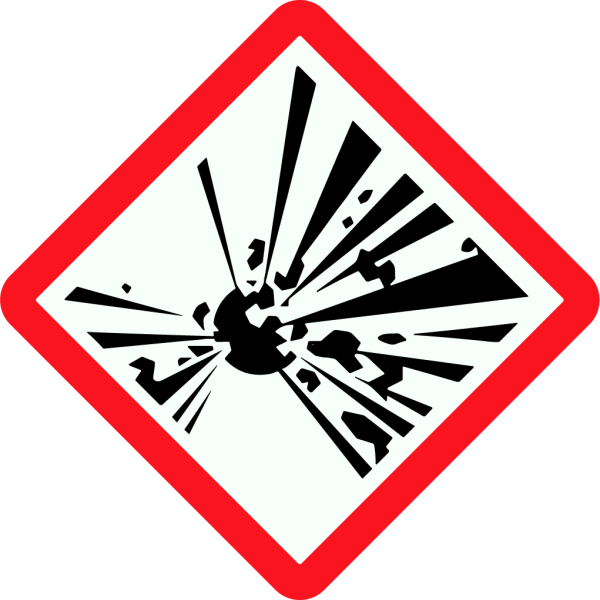
- Explosive
This symbol indicates that a substance may explode if subjected to heat, shock or friction. On safety signs, it warns workers to store and handle materials with extreme care. Its function is to prevent accidents caused by improper handling, and its benefit is the protection of life and property. 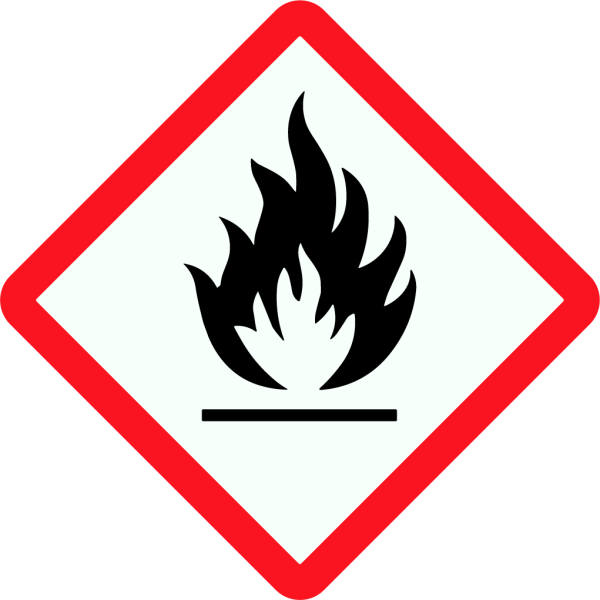 Flammable
Flammable
This symbol is used for substances that can easily ignite. Examples include petrol, solvents and gases. When displayed on signs, it prompts workers to keep the material away from sparks and open flames. Its benefit is reducing the risk of fires in the workplace.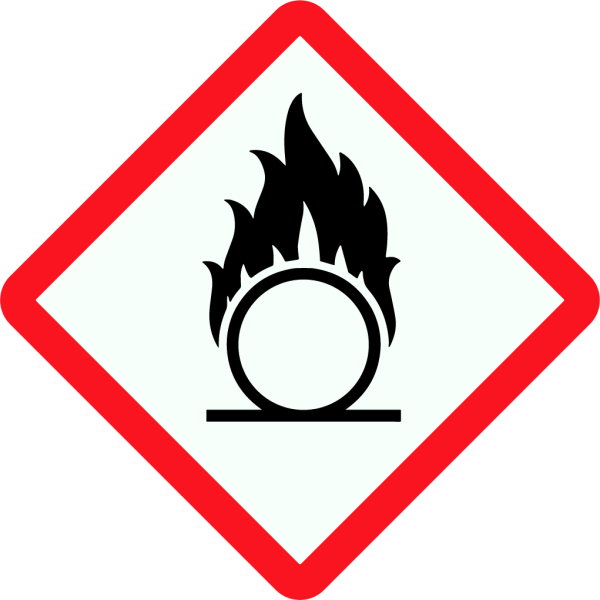 Oxidising
Oxidising
Oxidising substances can intensify a fire or cause other materials to burn more easily. The symbol signals that extra care must be taken when storing these substances near flammables. The function of the sign is to remind workers of the increased fire risk, while the benefit is safer storage and handling.- Corrosive
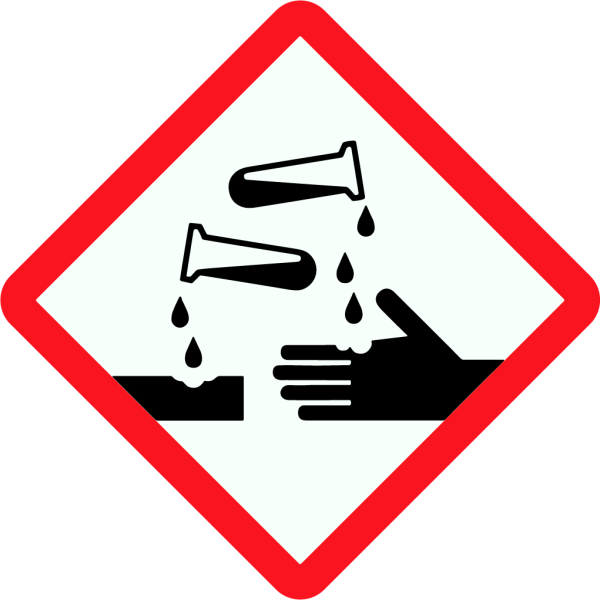 The corrosive symbol represents substances that can destroy living tissue as well as damage metals. It warns workers to wear suitable personal protective equipment such as gloves and goggles. Its function is to prevent burns and equipment damage, while its benefit is safeguarding health and preserving workplace assets.
The corrosive symbol represents substances that can destroy living tissue as well as damage metals. It warns workers to wear suitable personal protective equipment such as gloves and goggles. Its function is to prevent burns and equipment damage, while its benefit is safeguarding health and preserving workplace assets. - Toxic
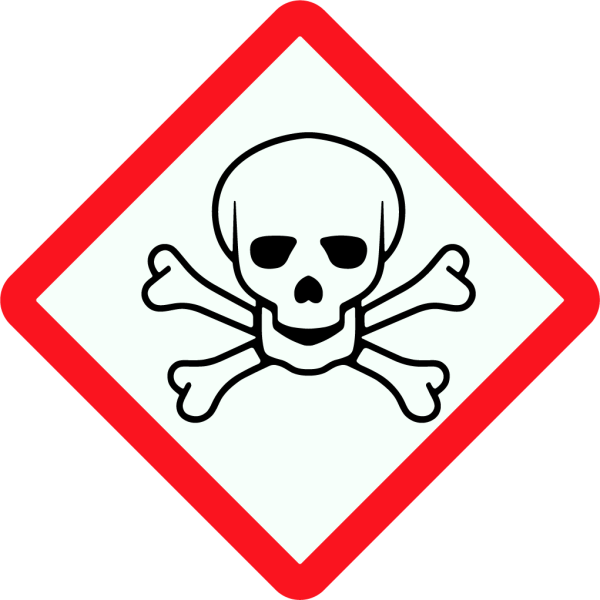 This symbol indicates substances that can cause serious harm or death if inhaled, swallowed or absorbed through the skin. On signage, it serves as a reminder that strict handling and storage measures are required. Its function is the prevention of poisoning, and its benefit is the protection of workers from potentially fatal exposure.
This symbol indicates substances that can cause serious harm or death if inhaled, swallowed or absorbed through the skin. On signage, it serves as a reminder that strict handling and storage measures are required. Its function is the prevention of poisoning, and its benefit is the protection of workers from potentially fatal exposure. - Harmful or Irritant
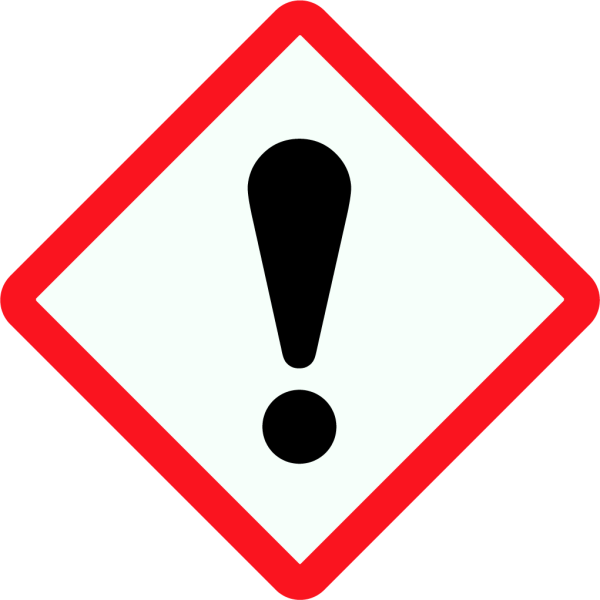 This symbol signals substances that may cause less severe health issues such as skin irritation, dizziness or allergic reactions. Its role is to alert workers to take precautionary measures, while the benefit is reducing avoidable health problems in the workplace.
This symbol signals substances that may cause less severe health issues such as skin irritation, dizziness or allergic reactions. Its role is to alert workers to take precautionary measures, while the benefit is reducing avoidable health problems in the workplace. 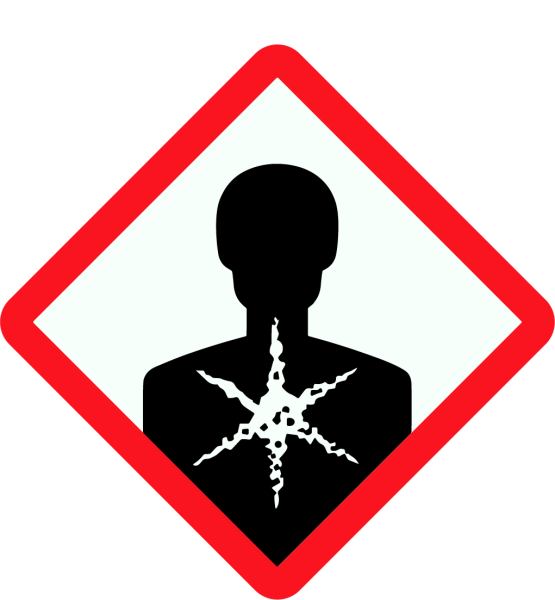 Health Hazard
Health Hazard
This symbol represents substances that may cause long term health effects such as cancer, respiratory issues or reproductive harm. On safety signage, it reminds employers and workers of the need for robust protective measures. The benefit is the reduction of long term illness and associated costs.- Environmental Hazard
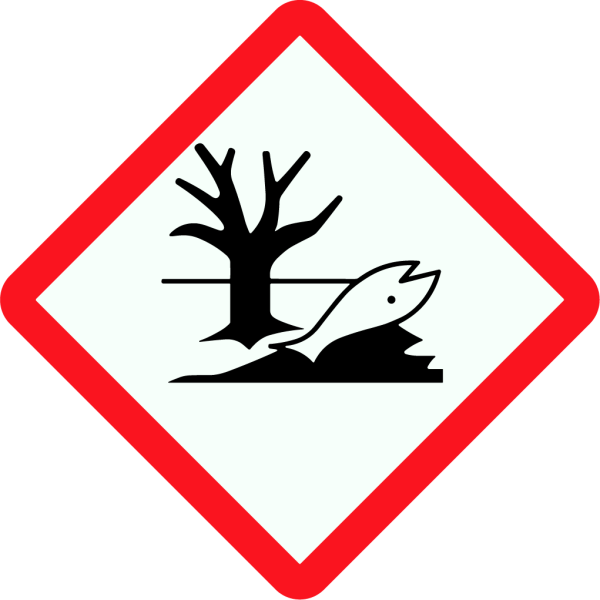 This symbol is used for substances that can cause damage to aquatic life and ecosystems. On signage, it reminds businesses to handle waste responsibly. The benefit is the protection of the environment and compliance with environmental regulations.
This symbol is used for substances that can cause damage to aquatic life and ecosystems. On signage, it reminds businesses to handle waste responsibly. The benefit is the protection of the environment and compliance with environmental regulations.
By understanding these symbols, workers can instantly identify the dangers associated with a substance, reducing the likelihood of accidents and improving workplace safety.
Why COSHH Symbols Matter in the Workplace
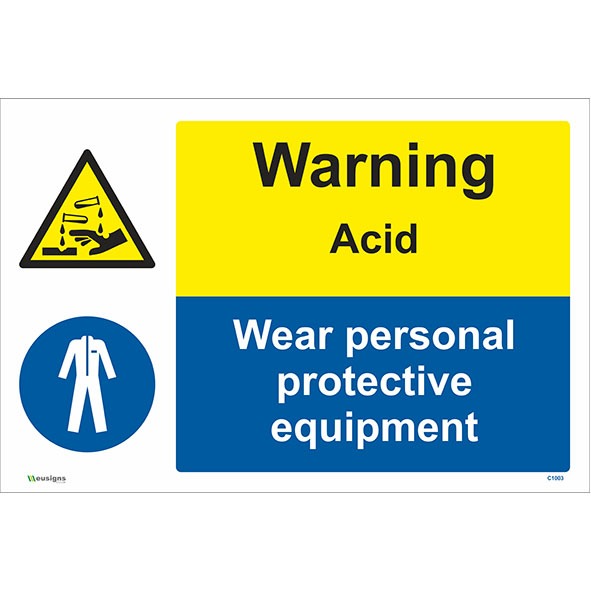
Warning Acid Wear Personal Protective Equipment Sign, health and safety sign, ppe signs, chemical warning signs
COSHH symbols are not simply images on a sign. They serve as critical tools for communication. Their presence provides multiple benefits that make them an essential part of health and safety strategies.
- Instant recognition: People understand the symbols regardless of language barriers, which allows international teams to work safely.
- Prevention of accidents: Clear signage reduces mistakes in handling, storage and disposal.
- Compliance with law: Businesses that display the correct symbols remain aligned with UK safety legislation.
- Improved training: Safety training is more effective when reinforced with visual symbols.
- Employee confidence: Workers feel safer when hazards are clearly labelled and managed.
In many cases, a safety sign featuring a COSHH symbol is the first line of defence against harm. When placed correctly on containers, storage areas and machinery, they form part of a wider safety culture that protects everyone on site.
UK Laws and Regulations
In the United Kingdom, the Control of Substances Hazardous to Health Regulations 2002, often referred to as COSHH Regulations, form the legal foundation for managing hazardous substances. Under these regulations, employers must assess risks, implement measures to prevent exposure, and provide adequate training for employees.
The law requires that hazardous substances be clearly labelled with the appropriate COSHH symbols. This ensures that anyone who encounters the substance is aware of its risks. The Health and Safety Executive (HSE) enforces these regulations, and failure to comply can lead to heavy fines, prosecution and reputational damage.
The law requires employers to:
- Identify hazardous substances used in the workplace.
- Conduct risk assessments to determine exposure levels.
- Provide suitable storage and handling procedures.
- Ensure that containers and areas display the correct COSHH symbols.
- Train employees in recognising and responding to the symbols.
- Review and update safety measures regularly.
By adhering to these requirements, businesses not only protect their employees but also demonstrate compliance with UK law.
The Benefits of Correct COSHH Signage
The proper use of COSHH symbols offers far more than legal compliance. It creates a safer and more efficient workplace. Well placed signage helps to prevent costly accidents, reduces downtime caused by injury, and improves overall productivity.
Workers handle substances more safely when signage clearly displays the hazards. This lowers the risk of damage to equipment, contamination of workspaces, and health problems among employees. Correct signage also contributes to environmental protection by preventing spills and improper disposal of dangerous chemicals.
From a business perspective, investing in clear and durable COSHH signs reduces the likelihood of financial penalties, legal claims and lost working days. It also enhances a company’s reputation as a responsible and safety conscious employer.
Tips for Implementing COSHH Symbols
To make the most of COSHH signage, employers should consider practical strategies for effective implementation. The following highlights best practices:
- Place signs where they are most visible, such as entrances to storage rooms, on chemical containers and near machinery.
- Use durable materials that can withstand exposure to chemicals, moisture and temperature changes.
- Regularly inspect signs to ensure they remain clear and legible.
- Include COSHH symbol training in employee induction programmes.
- Update signage whenever new substances enter the workplace or legislation changes.
- Make signs large enough to stand out in different environments.
- Integrate symbols into digital safety materials, manuals and training videos.
By following these steps, employers can ensure that COSHH symbols remain an effective safety tool.
Building a Culture of Safety Through COSHH
Ultimately, COSHH symbols are more than regulatory requirements. They form part of a broader culture of workplace safety. When employees understand the meaning of each symbol and trust that their employer takes safety seriously, morale improves and productivity increases.
A strong safety culture reduces staff turnover, improves employer reputation and ensures that employees feel valued. By integrating COSHH symbols into everyday operations, businesses create an environment where safety is not an afterthought but a fundamental principle.
The COSHH symbols represent one of the most effective ways to communicate hazards quickly and clearly. COSHH symbols play a crucial role in compliance, accident prevention and employee wellbeing. When organisations understand what each symbol means, display signage properly, and embed COSHH awareness into workplace culture, they actively meet legal obligations while fostering safer, healthier and more productive environments.
From Our Blog:
- How Often Should Health and Safety Signs Be Replaced?
- Fire Safety Sign Requirements for UK Businesses
- The Importance of Fire Signs in Buildings
- Which Safety Signs Are Relevant for Plant and Equipment?
- wear your mask sign
Our Products:




